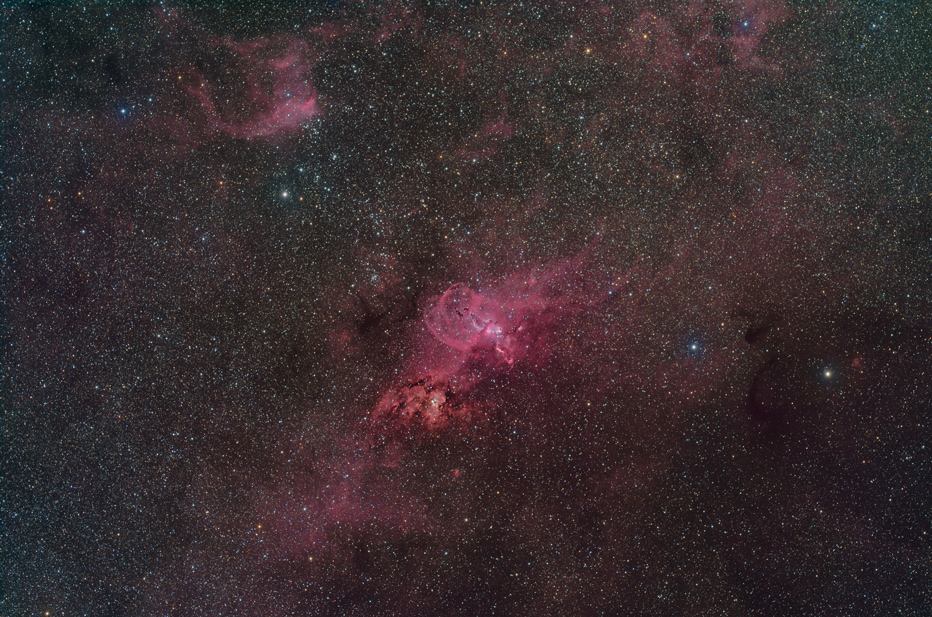
NGC3576: This is a large emission nebula/star-forming region, visually located in the constellation Carina. The red color of the nebulae is a result of the hydrogen gas surrounding the bright new stars being ionized by the stars; the yellower color of NGC3603 is because it's twice as far away from us as NGC3576, and the greater amount of dust between it and us attenuates the blue part of the spectrum (making it look more yellow). Some of the objects in this field are labeled on an image you can reach by clicking on the image above: The more pink part of the nebula near the center of the image generally is called NGC3576, but it historically is comprised of six NGC objects, each given separate catalog entries when each looked to be separate--NGC 3576, NGC 3579, NGC 3581, NGC 3582, NGC 3584 and NGC 3586; NGC3603 (the more yellow neighbor of NGC3576); NGC3572 (the horseshoe-shaped nebula toward the top left of the frame, together with the associated open star cluster); PNG290.1-00.4, a tiny planetary nebula toward the top center of the frame; and NGC3590, and open cluster near the center of the field. I have inserted two question marks on the annotated image, below to bubble-looking objects; I do not know whether these are separate objects, or just part of the nebulosity. This beautiful field is visually very close to the spectacular Eta Carinae Nebula. and the also very pretty Running Chicken Nebula. NGC3576 contains a star cluster with many massive, hot stars, only visible using the Chandra X-Ray Observatory; the shape of NGC3576 is thought to be a result the strong stellar winds caused by the new stars in this star-forming region. NGC3576 generally is thought to be about 9,000 light years from us, while NGC3603 is about 20,000 light years away, and NGC3572 is thought to be about 7,500 light years distant. NGC3576 is about 100 light years across; NGC3603 is part of a huge, very bright nebula perhaps 1,000 light years across.
Copyright 2013 Mark de Regt